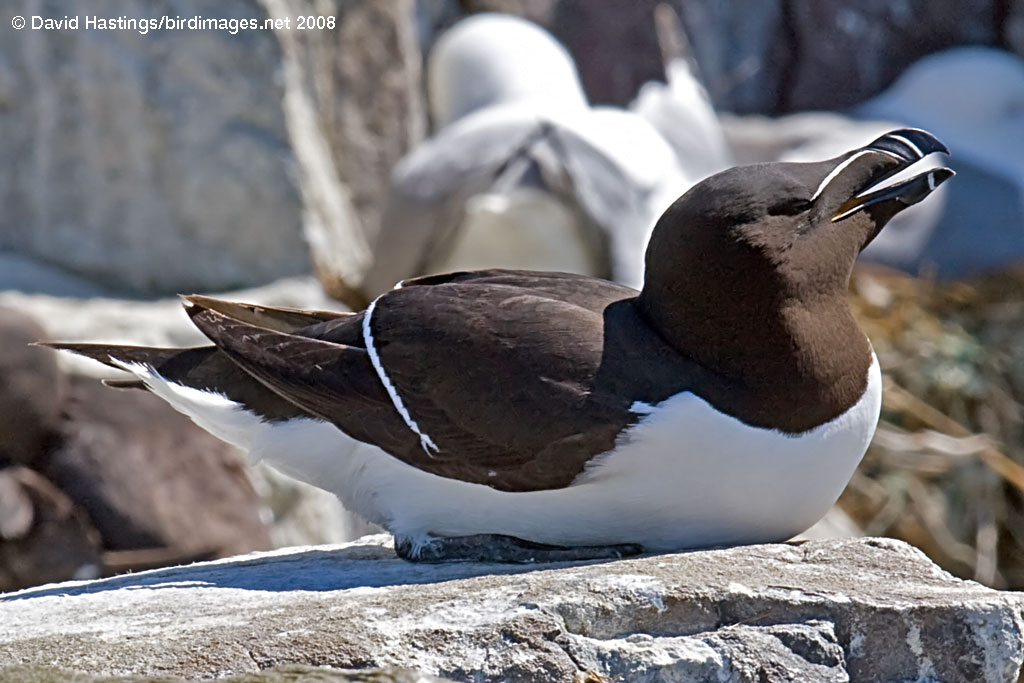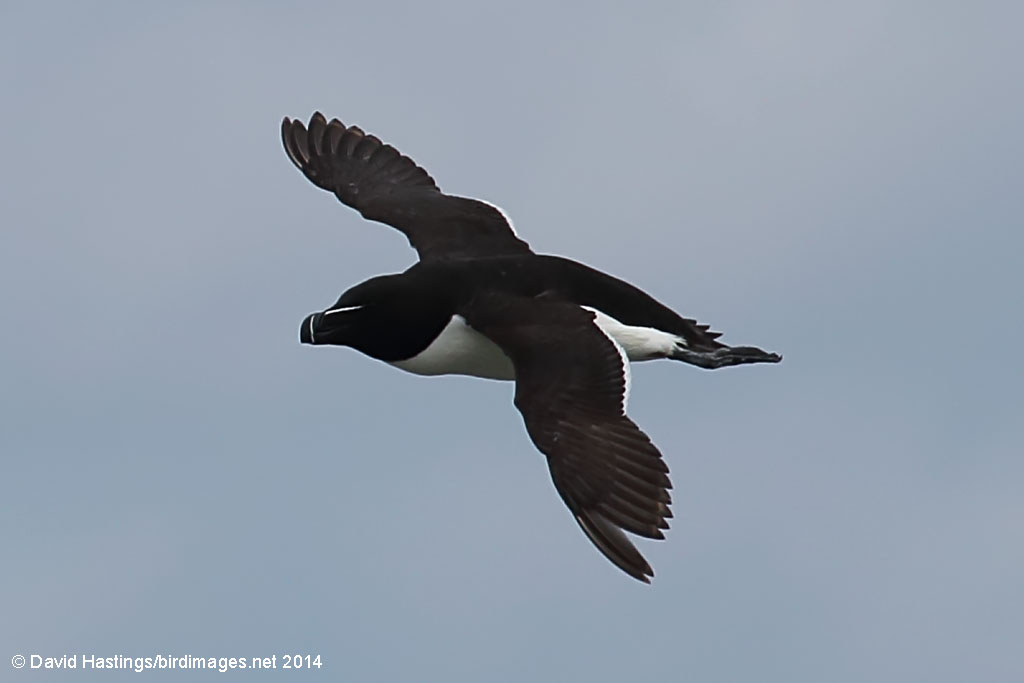Razorbill (Alca torda) | Species | ||||||||||||||||||||||||||||||||||||||||||||||||||||||||||||||||||||||||||||
Taken on Staple Island, Northumberland on June 4th 2008. (© David Hastings) (1/125th sec at f14. Click image for larger version) Taken at Bempton Cliffs, E. Yorks, on July 1st 2014. (© David Hastings) (1/1000th sec at f13. Click image for larger version) DescriptionL: 38 - 43 cm; WS: 60 - 69 cm The Razorbill is a medium-sized seabird. It is black above and white below. It has a thick black beak which is deep and blunt, unlike the thinner bill of the similar Guillemot. It breeds around the coast of the UK, with the largest colonies in northern Scotland. There are none breeding between the Humber and the Isle of Wight The breeding habitat is sheer sea cliffs. Birds only come to shore to breed, and spend the winter in the northern Atlantic. It has Amber conservation status, as it vulnerable to fishing nets, pollution and declining fish stocks. Around 188000 pairs breed in Britain. Sightings
| |||||||||||||||||||||||||||||||||||||||||||||||||||||||||||||||||||||||||||||


